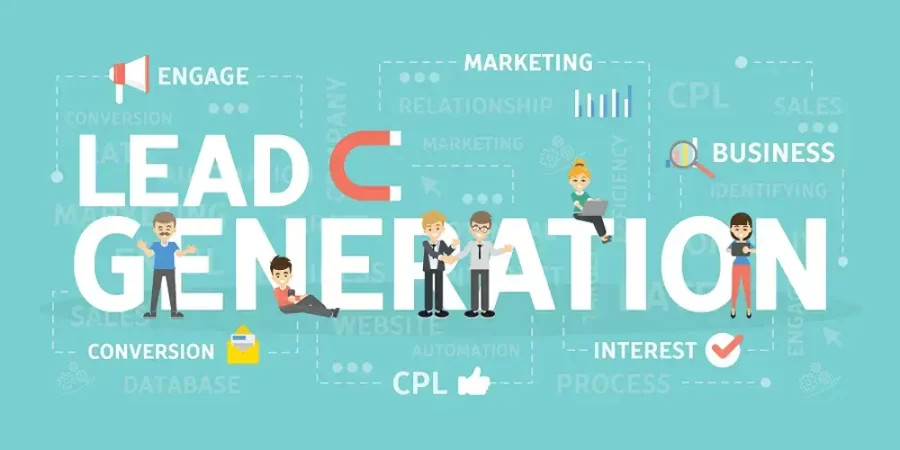Beginners Guide: How To Effectively Use Landing Pages And Lead Forms?
Landing pages and lead forms are important tools for businesses looking to generate leads and convert website visitors into customers. In this article, we will explore the key elements of an effective landing page and lead form, and provide tips for creating and optimizing them to maximize conversions.
First, let’s define what a landing page is. A landing page is a standalone web page that is designed to convert visitors into leads or customers. It is typically accessed through a link from an email, social media post, or paid ad, and is designed to be highly targeted and relevant to the person clicking on the link.
Lead forms, on the other hand, are forms that are placed on a landing page and are used to collect contact information from potential leads. The information collected in a lead form is typically used to nurture the lead into a customer, or to pass the lead along to a sales team for follow-up.
To effectively use landing pages and lead forms, there are several key elements to consider:
- Headline: The headline of your landing page should be clear, concise, and attention-grabbing. It should also be closely related to the offer or message being promoted on the page.
- Copy: The copy on your landing page should be well-written, engaging, and focused on the benefits of your product or service. Use persuasive language and clear calls-to-action (CTA) to encourage visitors to take the next step.
- Images: Use high-quality images or videos on your landing page to showcase your product or service. Images can be used to break up text and make the page more visually appealing, and videos can be used to demonstrate the value of your product or service.
- Lead Form: The lead form should be prominently placed on the page and should be easy to fill out. Limit the number of fields to only the most essential information, such as name, email, and phone number.
- A/B Testing: A/B testing is the process of testing different versions of your landing page to see which one performs better. This can be done by creating two or more versions of the page, and then split-testing them by sending equal amounts of traffic to each version.
- Use Social Proof: Adding social proof to your landing page can help to build trust and credibility with your visitors. This can include customer testimonials, reviews, or case studies.
- Optimize for Mobile: With the increasing number of people accessing the internet on their mobile devices, it is essential to ensure that your landing page is optimized for mobile. This includes using a responsive design, larger text, and larger buttons.
- Track and Analyze: Use tools like Google Analytics to track the performance of your landing page and lead forms. Analyze the data to identify areas for improvement, such as high bounce rates or low conversion rates.
Landing pages and lead forms are powerful tools for generating leads and converting website visitors into customers. By following the tips outlined in this article, you can create effective landing pages and lead forms that will help you to maximize conversions and grow your business. However, It’s important to remember that creating effective landing pages and lead forms takes time, experimentation and iteration. The key is to keep testing different elements, analyzing the results and making improvements as you go.
Another important element to consider when creating landing pages and lead forms is the offer or incentive you provide to visitors. This can be a free trial, a discount, a white paper, or any other valuable resource that is relevant to your target audience. The offer should be clearly stated and prominently displayed on the page, and it should be directly tied to the action you want visitors to take (e.g. filling out the lead form).
It’s also important to consider the user experience (UX) of your landing page. This includes the overall design and layout of the page, as well as the navigation and flow of the page. The page should be easy to navigate and the CTA should be prominently displayed and easy to find. Make sure the page loads quickly and is free of any technical issues, such as broken links or 404 errors.
Another effective strategy for increasing conversions on your landing pages is to use retargeting. Retargeting involves placing a cookie on the visitor’s browser, and then serving them targeted ads as they browse other websites. This can be a powerful way to remind visitors of your offer and bring them back to your landing page to convert.
It’s important to remember that your landing pages and lead forms should align with your overall marketing and sales strategies. This includes your buyer personas, marketing funnel, and lead nurturing process. By aligning your landing pages and lead forms with these strategies, you can ensure that the leads you generate are high-quality and are more likely to convert into customers.
Here are some bullet points to help you learn how to effectively use landing pages and lead forms for success:
- Headline: The headline of the landing page should be clear, concise, and attention-grabbing. It should also be closely related to the offer or message being promoted on the page. This is the first thing visitors will see on the page, so it’s crucial that it grabs their attention and entices them to stay and read more.
- Copy: The copy on the landing page should be well-written, engaging, and focused on the benefits of the product or service. Use persuasive language and clear calls-to-action (CTA) to encourage visitors to take the next step. The copy should be easy to read, scannable and provide enough information to visitors to make an informed decision.
- Images: High-quality images or videos should be used on the landing page to showcase the product or service. Images can break up text and make the page more visually appealing, and videos can be used to demonstrate the value of the product or service.
- Lead Form: The lead form should be prominently placed on the page and should be easy to fill out. Limit the number of fields to only the most essential information, such as name, email, and phone number. This will make the form less intimidating and increase the chances of visitors completing it.
- A/B Testing: A/B testing is the process of testing different versions of the landing page to see which one performs better. This can be done by creating two or more versions of the page, and then split-testing them by sending equal amounts of traffic to each version. This allows businesses to identify what elements of the page work best and improve the page accordingly.
- Use Social Proof: Adding social proof to the landing page can help to build trust and credibility with visitors. This can include customer testimonials, reviews, or case studies. This can provide a sense of validation and trust to visitors, increasing their likelihood of converting.
- Optimize for Mobile: With the increasing number of people accessing the internet on their mobile devices, it is essential to ensure that the landing page is optimized for mobile. This includes using a responsive design, larger text, and larger buttons. This will make the page more accessible and user-friendly for mobile users.
- Track and Analyze: Use tools like Google Analytics to track the performance of the landing page and lead forms. Analyze the data to identify areas for improvement, such as high bounce rates or low conversion rates. This will allow businesses to make data-driven decisions and improve the performance of the page over time.
- Offer or Incentive: The offer or incentive provided to visitors should be clearly stated and prominently displayed on the page. It should be directly tied to the action the business wants visitors to take (e.g. filling out the lead form). This will entice visitors to take action and convert.
- User Experience: The overall design and layout of the page should be easy to navigate and the CTA should be prominently displayed and easy to find. The page should load quickly and be free of technical issues. This will make the page more user-friendly and increase the chances of visitors converting.
- Retargeting: Retargeting involves placing a cookie on the visitor’s browser, and then serving them targeted ads as they browse other websites. This can be a powerful way to remind visitors of the offer and bring them back to the landing page to convert.
- Alignment with Overall Strategies: The landing pages and lead forms should align with the overall marketing and sales strategies, such as buyer personas, marketing funnel, and lead nurturing process. By aligning them, the leads generated are more likely to be high-quality and convert into customers.
In conclusion, landing pages and lead forms are essential tools for businesses looking to generate leads and convert website visitors into customers. By focusing on key elements such as headlines, copy, images, lead forms, A/B testing, social proof, mobile optimization, and tracking and analysis, you can create effective landing pages and lead forms that will help you to maximize conversions and grow your business.
Additionally, it’s important to consider the user experience, retargeting and aligning the pages with your overall marketing and sales strategies. Remember that creating effective landing pages and lead forms takes time, experimentation and iteration. The key is to keep testing different elements, analyzing the results and making improvements as you go. With a well-designed and optimized landing page and lead form, you can turn website visitors into loyal customers and drive growth for your business.





Leave a Reply